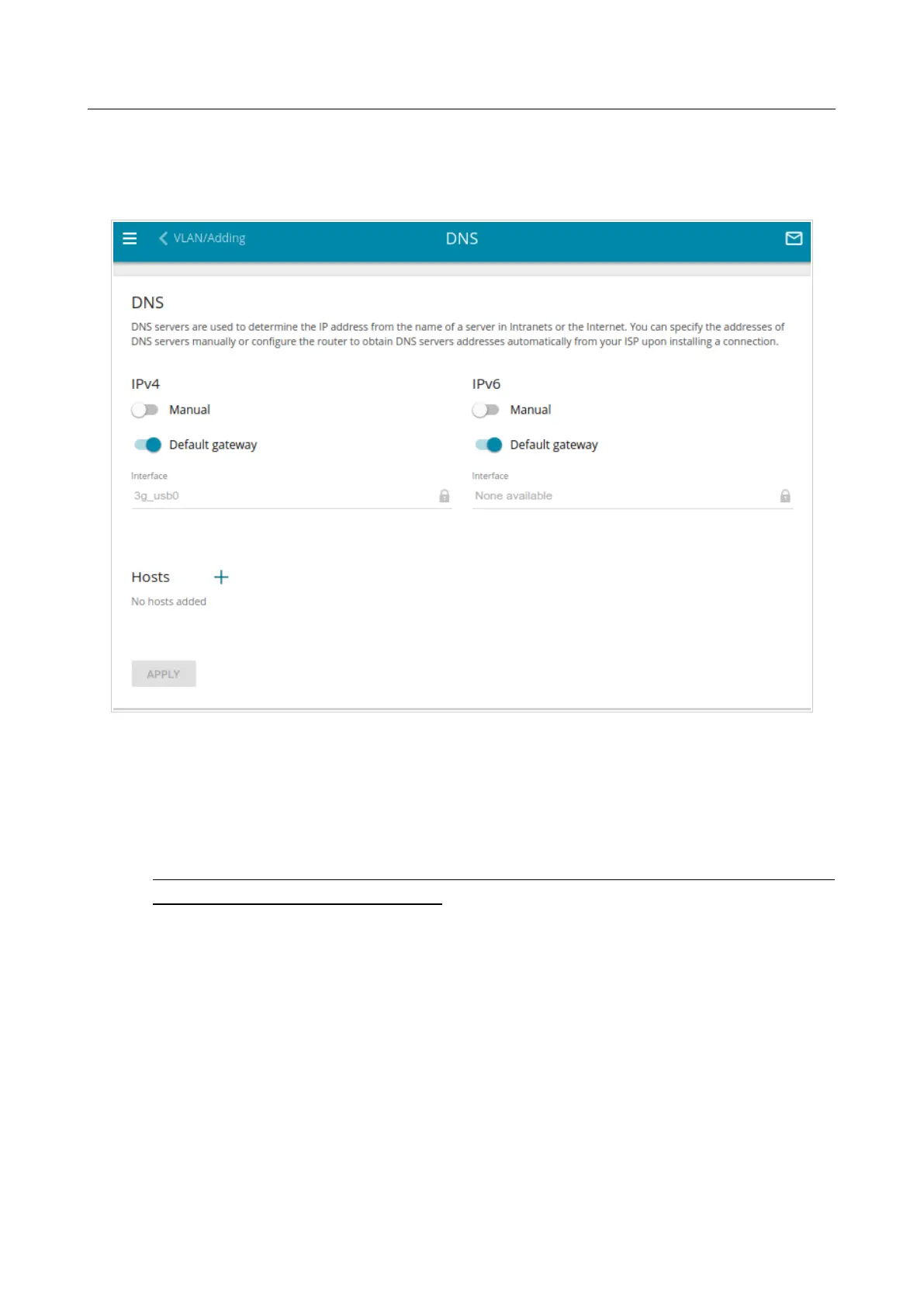DIR-815 AC1200 Wave 2 MU-MIMO Wi-Fi
Router with 3G/LTE Support and USB Port
User Manual
Configuring via Web-based Interface
DNS
On the Advanced / DNS page, you can add DNS servers to the system.
Figure 136. The Advanced / DNS page.
DNS servers are used to determine the IP address from the name of a server in Intranets or the
Internet (as a rule, they are specified by an ISP or assigned by a network administrator).
You can specify the addresses of DNS servers manually on this page or configure the router to
obtain DNS servers addresses automatically from your ISP upon installing a connection.
!
When you use the built-in DHCP server, the network parameters (including DNS servers)
are distributed to clients automatically.
Specify needed settings for IPv4 in the IPv4 section and for IPv6 in the IPv6 section.
If you want to configure automatic obtainment of DNS servers addresses, move the Manual switch
to the left. Then move the Default gateway switch to the left and from the Interface drop-down
list select a WAN connection which will be used to obtain addresses of DNS servers automatically.
If you want the router to use the default WAN connection to obtain addresses of DNS servers, move
the Default gateway switch to the right. Then click the APPLY button.
To specify a DNS server manually, move the Manual switch to the right. In the Name Servers
section of the relevant IP version, click the ADD SERVER button, and in the line displayed, enter
an IP address of the DNS server. Then click the APPLY button.
Page 176 of 240
